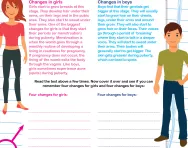Important update from TheSchoolRun
For the past 13 years, TheSchoolRun has been run by a small team of mums working from home, dedicated to providing quality educational resources to primary school parents. Unfortunately, rising supplier costs and falling revenue have made it impossible for us to continue operating, and we’ve had to make the difficult decision to close. The good news: We’ve arranged for another educational provider to take over many of our resources. These will be hosted on a new portal, where the content will be updated and expanded to support your child’s learning.
What this means for subscribers:
- Your subscription is still active, and for now, you can keep using the website as normal — just log in with your usual details to access all our articles and resources*.
- In a few months, all resources will move to the new portal. You’ll continue to have access there until your subscription ends. We’ll send you full details nearer the time.
- As a thank you for your support, we’ll also be sending you 16 primary school eBooks (worth £108.84) to download and keep.
A few changes to be aware of:
- The Learning Journey weekly email has ended, but your child’s plan will still be updated on your dashboard each Monday. Just log in to see the recommended worksheets.
- The 11+ weekly emails have now ended. We sent you all the remaining emails in the series at the end of March — please check your inbox (and spam folder) if you haven’t seen them. You can also follow the full programme here: 11+ Learning Journey.
If you have any questions, please contact us at [email protected]. Thank you for being part of our journey it’s been a privilege to support your family’s learning.
*If you need to reset your password, it will still work as usual. Please check your spam folder if the reset email doesn’t appear in your inbox.
Are girls growing up too fast?

While most parents agree that little girls playing dress-up is totally acceptable, it is disconcerting to see toddlers hobbling in high heels, clad in clothes you’d normally see on a 20 year old on a night out. It’s something experts see as a sign that today’s children are growing up too quickly and becoming over-sexualised.


Boost your child's maths & English skills!
- Follow a weekly programme
- Maths & English resources
- Keeps your child's learning on track
High heels, make-up sets and grown-up style clothing, such as short skirts and knee-high boots are also directly marketed to kids. With so-called ‘role models’, including Miley Cyrus, Paris Hilton and even the Bratz Dolls endorsing the less-is-more school of dressing, it’s no wonder that young girls want to wear high heels and hot pants to emulate the stars they look up to. Plus, there’s no shortage of companies willing to take advantage of these young consumers.
Negative effects
A report by Girlguiding UK and the Mental Health Foundation in 2008 revealed the negative effects of growing up too young and early exposure to sexualised content in the media. The charities surveyed girls aged 10 to 14 and found that ‘premature sexualisation and pressure to grow up too quickly’ were two key negative influences on emotional and mental wellbeing. In particular, magazines that compel kids to wear adult clothes, lose weight and even have plastic surgery were cited as causing anxiety, stress and anger. Young girls also felt that the media reinforced the expectation among peers to look slimmer, older and more fashionable, which could lead to bullying if you didn’t conform to the media’s images of young women.
The survey showed that looking at pictures of models, pop stars and actresses made a fifth of the girls feel sad, two-fifths feel bad about themselves and over a tenth (12 percent) feel angry. Another recent survey by the Girl Guides recently discovered that 46% of girls aged 11 to 16 would consider cosmetic surgery and that girls started to dislike their appearance as early as 10 or 11.
Top tips
With more and more reports revealing just how unhappy young girls are with their looks, we share some tips for boosting your child’s self-esteem and protecting them from sexual and negative media content:
- Take a strong stance against clothes or make-up that you consider to be too old or too sexual for your child. Make rules about types of clothes that are and aren’t acceptable, and stick to them.
- Help kids to challenge and be critical of media images. Discuss any content you disagree with and present an alternative point of view.
- Provide them with a stable and supportive network of friends by taking them to a club such as Brownies or sports/dance activities.
- Monitor their internet usage perhaps by keeping the computer in the living room where you can see what websites they visit.
- Adhere to the age restrictions on DVDs and keep a close eye on what magazines they read.
- At the same time be open and honest about sex and relationships – see our guide to talking to kids about sex.








